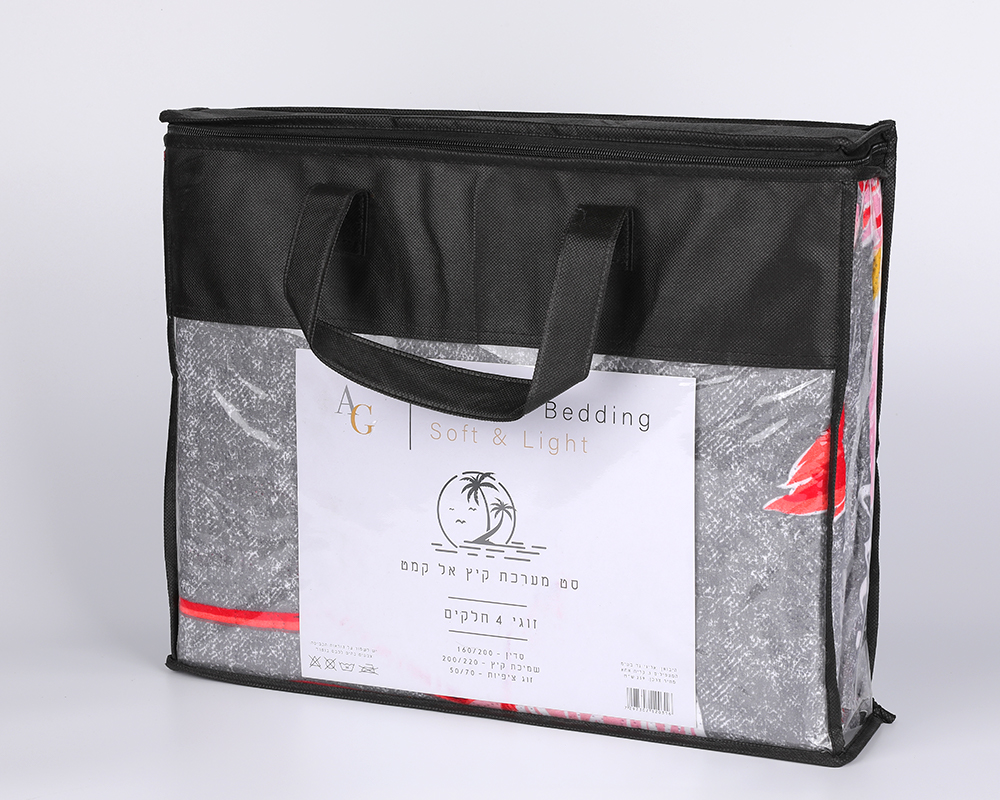Search...
The frequency and difficulty of cleaning Home Textile Bedding Sets can be significantly reduced with anti-fouling coating technology. Anti-fouling coating is a functional treatment that forms a protective layer on the fabric surface, reducing the adhesion of stains, dust or liquids, thereby extending the life of the bedding and simplifying the cleaning process. The following is a detailed analysis of the application of this technology and its advantages and disadvantages:
1. The basic principle of anti-fouling coating
Anti-fouling coating reduces the penetration and adhesion of stains by changing the physical or chemical properties of the fabric surface to make it hydrophobic, oleophobic or antistatic:
Hydrophobicity: Prevents liquids (such as coffee, juice) from penetrating into the fiber, causing the liquid to bead on the surface and be easy to wipe.
Oleophobicity: Prevents grease stains (such as skin care products, cooking oil) from adhering to the fabric surface.
Antistatic: Reduces the adsorption of static electricity to dust and particles, keeping the surface of the bedding clean for longer.
2. Types of antifouling coating technologies
(1) Nanocoating technology
Nanocoatings (such as silica or titanium oxide-based coatings) can form an ultra-thin protective film on the surface of fabrics, giving them excellent antifouling properties.
This coating is usually breathable and transparent, and does not affect the feel and appearance of the fabric.
For example, nano-scale hydrophobic coatings can effectively prevent liquid penetration while allowing air to circulate.
(2) Fluoride coatings
Fluoride coatings (such as fluoropolymers) are common antifouling treatments with extremely strong hydrophobic and oleophobic properties.
This coating can resist a variety of liquid and grease stains, but environmental issues need to be paid attention to because some fluorinated compounds may be harmful to the environment.
(3) Silicone coatings
Silicone coatings can give fabrics a soft feel and good water-repellent properties.
It is suitable for natural fibers such as cotton and linen, and can improve antifouling properties while retaining the natural characteristics of the fabric.
(4) Bio-based coatings
Bio-based coatings (such as plant extracts or degradable polymers) are an emerging environmentally friendly antifouling technology.
This coating not only has anti-fouling properties, but also conforms to the trend of sustainable development.
3. How anti-fouling coating reduces the frequency and difficulty of cleaning
(1) Reduce stain penetration
Anti-fouling coating can prevent liquids and grease from penetrating deep into the fiber, so that stains remain on the surface, making them easy to clean quickly.
For example, spilled drinks can form beads on the surface of the coating, which can be easily wiped off with a paper towel without frequent cleaning.
(2) Reduce cleaning difficulty
Since stains are not easy to adhere, daily cleaning only requires simple patting or vacuuming to remove dust and particles.
For stubborn stains, the presence of the coating can reduce the amount of detergent used and the washing time.
(3) Extend the washing cycle
Anti-fouling coating can significantly extend the washing cycle of bedding, from once a week to once every two weeks or once a month.
This not only saves users time and energy, but also reduces fabric wear and aging caused by frequent washing.
4. Precautions in practical application
(1) Durability of coating
The durability of anti-fouling coating is a key factor. If the coating fails after multiple washings, its anti-fouling effect will be greatly reduced.
The bonding force between the coating and the fiber can be enhanced through cross-linking technology (such as chemical bonding), thereby improving its washability and abrasion resistance.
(2) Hand feel and breathability
Antifouling coatings may have a certain impact on the hand feel and breathability of the fabric, so it is necessary to find a balance between functionality and comfort.
For example, the use of nano-coating technology can provide excellent antifouling performance without affecting breathability.
(3) Environmental protection and safety
Traditional antifouling coatings such as fluorinated compounds may pose environmental and health risks, so it is recommended to choose environmentally friendly coatings (such as bio-based coatings or fluorine-free coatings).
Coating materials that meet OEKO-TEX® Standard 100 or other environmental certifications are more popular with consumers.
(4) Applicable scenarios
Antifouling coatings are particularly important in scenarios where there are children, pets or people with allergies in the family, which can reduce frequent cleaning caused by accidental stains.
In scenarios with high frequency of use such as hotels or medical institutions, antifouling coatings can significantly reduce maintenance costs.
5. Market and consumer demand
(1) Demand in the high-end market
High-end consumers are increasingly concerned about the functionality of products, and antifouling coatings have become an important selling point for increasing the added value of bedding.
Brands can attract high-end users by promoting the convenience and environmental friendliness of antifouling coatings.
(2) Economical and popular
The cost of antifouling coatings is relatively high, but with technological progress and large-scale production, their prices are gradually becoming reasonable and are expected to be popularized in the mass market in the future.
(3) Education and promotion
Consumer education is an important part of promoting antifouling coatings. Brands can use demonstration experiments or case studies to let consumers understand their advantages intuitively.
The antifouling coating technology can significantly reduce the frequency and difficulty of cleaning Home Textile Bedding Sets. This technology can not only improve the user experience, but also extend the service life of bedding, while meeting the needs of modern consumers for convenience and environmental friendliness. However, in actual applications, it is necessary to comprehensively consider the durability, feel, breathability and environmental friendliness of the coating to ensure that it achieves the best balance between functionality and comfort.

 English
English
 中文简体
中文简体
 Español
Español





.jpg?imageView2/2/format/jp2)






